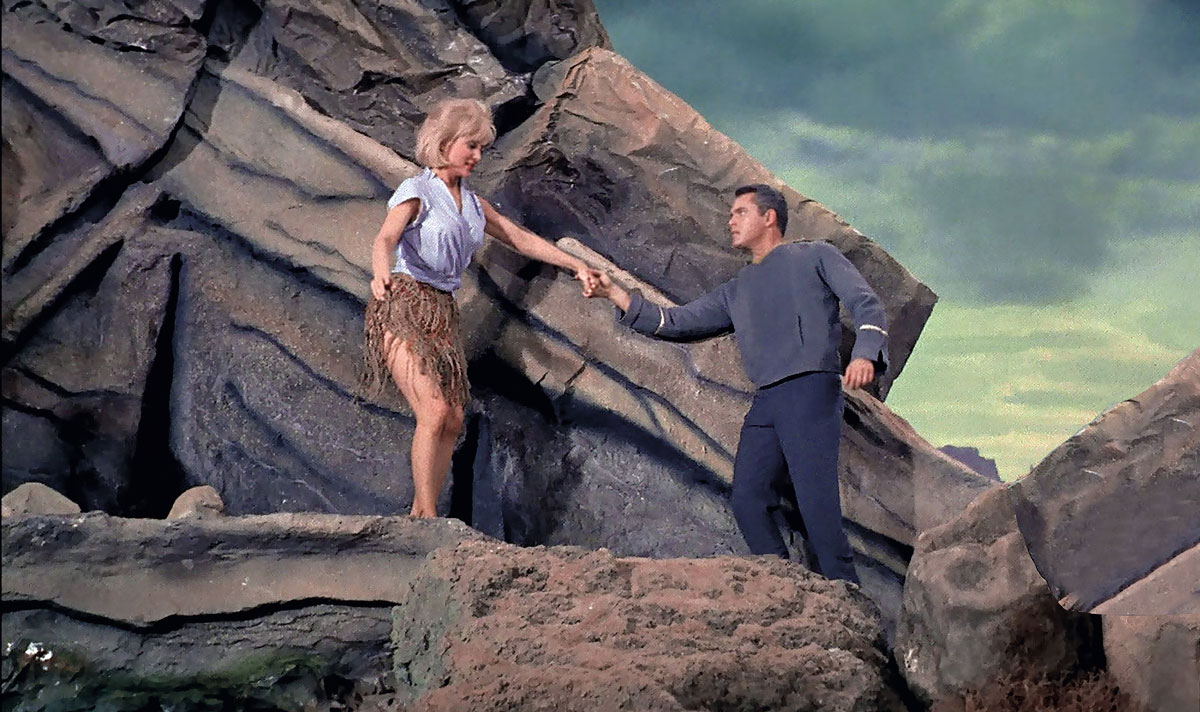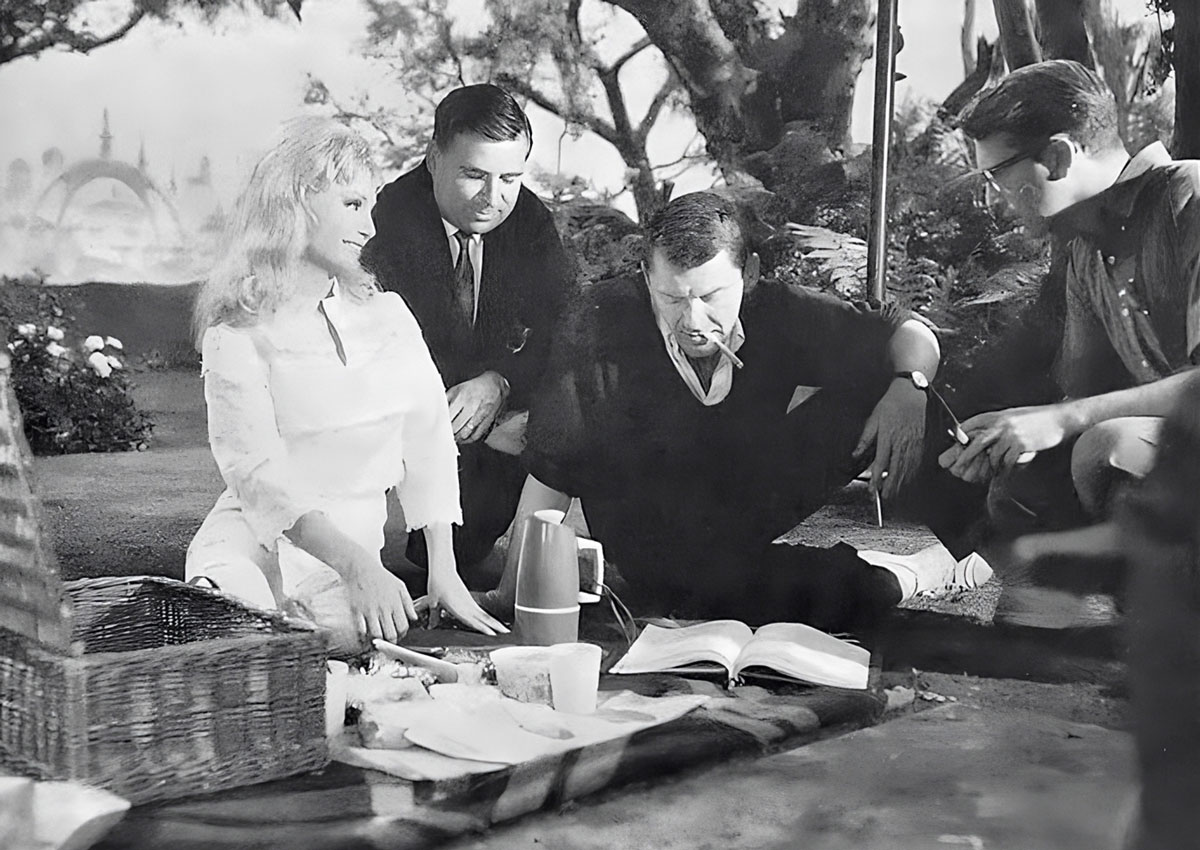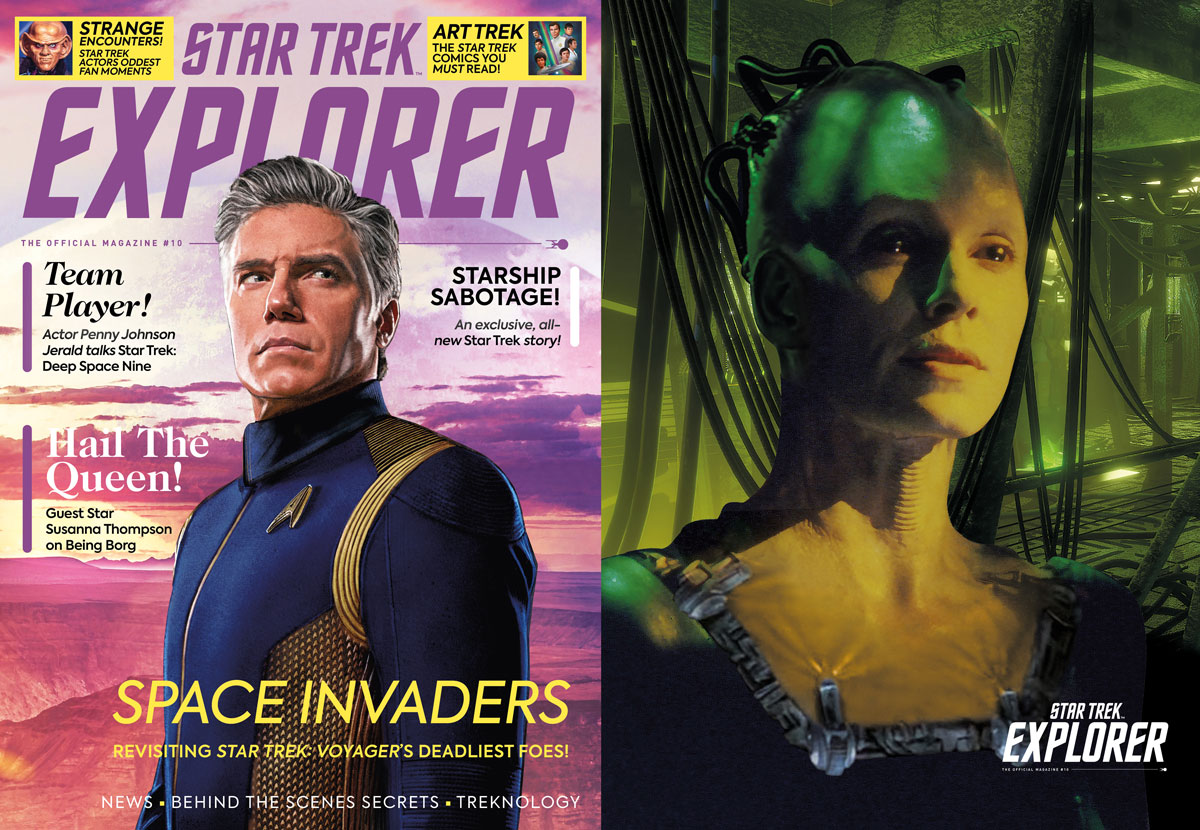Issue #10 of Star Trek Explorer, the official magazine for the Star Trek Universe, beams down to subscribers next week — and we’ve got an exclusive look at a new feature diving into the creation of the very first Original Series pilot episode, “The Cage.”

Writer Joe Nazzaro explores the development of “The Cage” in the upcoming issue, speaking to episode director Robert Butler (in an interview conducted before his passing in November 2023).
There’s a nineteenth century French quote that loosely translates into ‘The more things change, the more they stay the same.’ As long-time science fiction fans will attest, that phrase certainly applies to the original 1965 Star Trek pilot, “The Cage”. Although it was rejected by the network and eventually repurposed into a two-part episode of the new series, “The Cage” has become a pivotal back-story element in the new Star Trek: Strange New Worlds.
One of the architects behind “The Cage” was award-winning director Robert Butler, who throughout the sixties, seventies and eighties was responsible for some of the most distinguished pilots in TV history, including Batman, Hogan’s Heroes, Remington Steele, and Hill Street Blues. An associate director in 1950’s live television, Butler began directing with the half-hour Jackie Cooper series Hennessey and never stopped working after that.
Another early series was The Lieutenant, created by writer Gene Rodenberry, which led to Butler’s directing gig on “The Cage.”
“I had done two or three episodes of the series, which was about a marine lieutenant in peacetime, and that was an hour series that ran a season or two, and Gene liked what I had done, so when he created Star Trek, he asked me to do it.”
Butler, a virtual novice to science fiction, recalls reading the script and wondering if perhaps there was a bit too much in it to pull off. “It was just stuffed with SF [SciFi] elements. I remember saying to my wife, ‘This thing is going to be hard for the audience to follow; it’s too jam-packed!’
“She suggested I do it anyway and maybe it would clear up, so I shot it, but remember NBC saying, ‘We like it, we believe it, but we don’t understand it; do it again!’

So how does one even begin to deal with a jam-packed science fiction script full of effects that had rarely been done on a television schedule or budget?
“You just give the elephant a spoonful at a time,” responds Butler. “You work on the moment at hand to make it as convincing and believable as you can, so in pre-production, you try and support those moments in preparation; getting the right costumes, getting the right special effects and the right design; inch by inch and a spoonful at a time.
“I remember the old woman who reverts to being an old hag for example, that was a stock SF trick. At the time, instead of morphing, which one would do now, what you did was time-lapse photography. There would be a head brace for her to hold her head in an appropriate position, you would shoot a piece of the scene and then she would go change makeup, and then shoot another piece. A lot of the execution was actually standard science fiction execution.”
Maybe so, but in the mid-1960s, such effects were hardly standard fare in weekly television. “That’s true, and of course a pilot takes even more time and money to work these things out, such as the beaming up and beaming down, which we had to invent for the pilot, which was basically an old disappearance magic trick. They later added the Tinkerbell dust, but it was essentially the same trick.
“During rehearsal, I remember consciously thinking about The Thing, specifically about the performances and I was bored at that time with the ‘exclamation points.’ All SF, fantasy and enlarged melodrama was played in an excited tone: ‘My God, I just saw him, and you’ve got to be careful!’ The Thing was so dry and quiet because they were afraid the beast would overhear them. We tried that for maybe two days, and I talked to the cast about declaiming and exclaiming and I said ‘Let’s make this thing dry and realistic!’ I wanted to add vérité to our science fiction.”
Needless to say, that approach did not work.

You can read the full interview with Butler — along interviews with Susanna Thompson, Penny Johnson Jerald and Derek Tyler Attico, a guide to Strange New Worlds’ first season, and new Star Trek short fiction stores — when Star Trek Explorer #10 goes on sale January 23.
![]()
Head over to Titan Magazines’ site to subscribe, or to pick up back issues of the previous Star Trek Explorer releases if you missed them.
